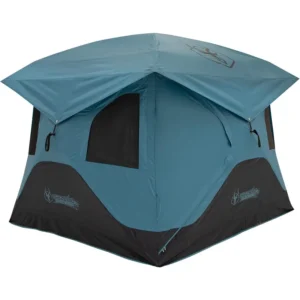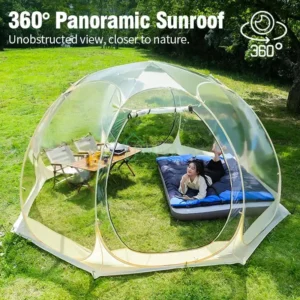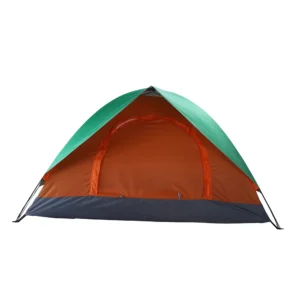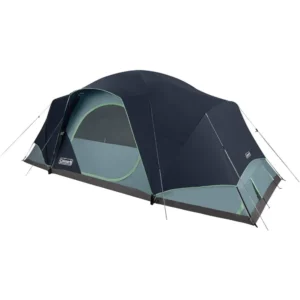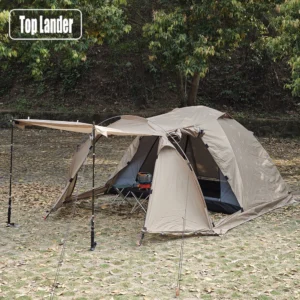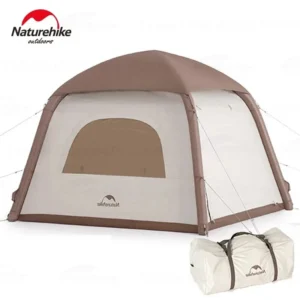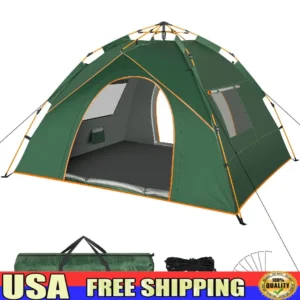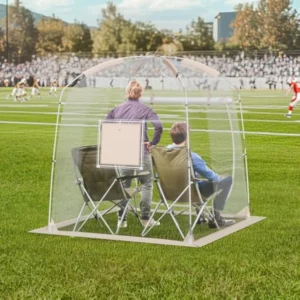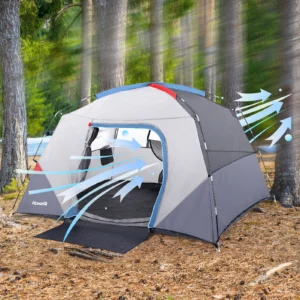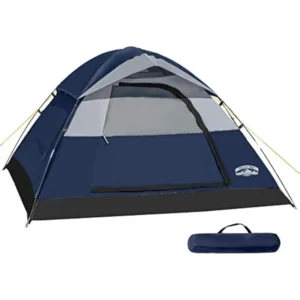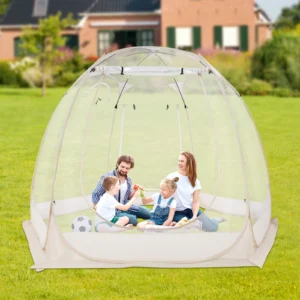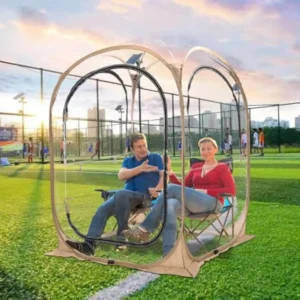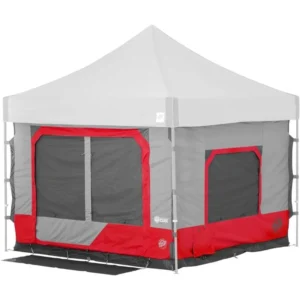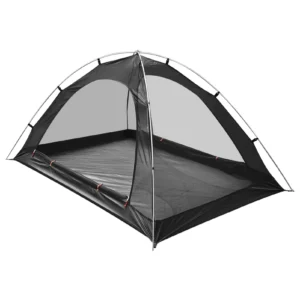Dome Camping Tent
Explore dome camping tents. Light to carry yet strong in harsh weather, their efficient shape gives ample room for backpacking or group adventures.
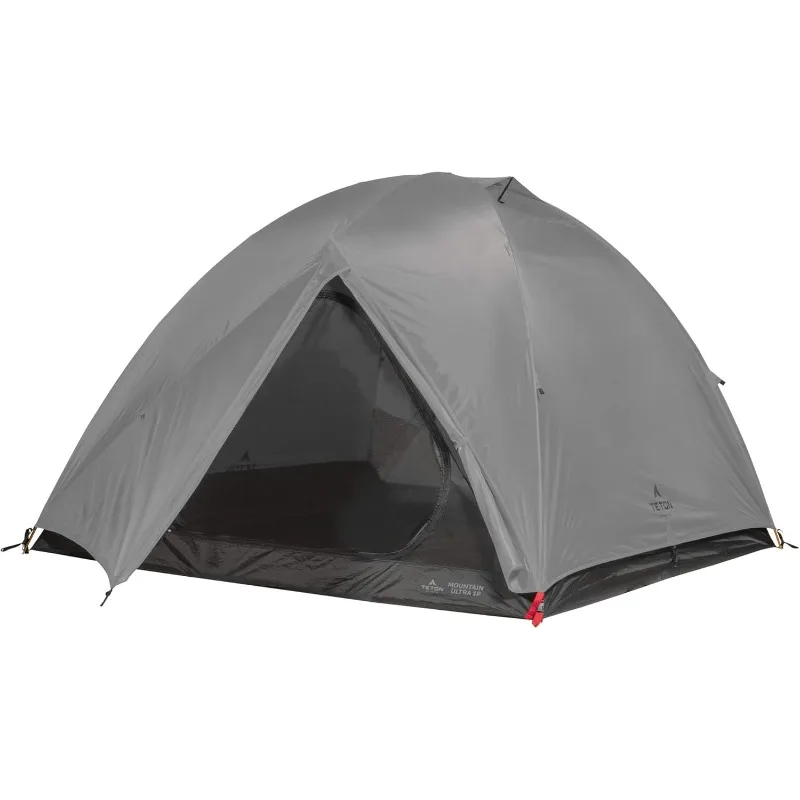
Showing 1–12 of 23 results
Canvas Camping Tent, Dome Camping Tent, Waterproof Camping Tent
$1,056.55 Select options This product has multiple variants. The options may be chosen on the product pageDome Camping Tent, Heavy Duty 4 Season Tent, Winter Camping Tent
Price range: $568.41 through $677.18 Select options This product has multiple variants. The options may be chosen on the product pageCamping Tent with Vestibule, Dome Camping Tent, Waterproof Camping Tent
$188.44 Select options This product has multiple variants. The options may be chosen on the product pageDome Camping Tent, Easy Setup Camping Tent, Pop Up Dome Tent
$547.16 Select options This product has multiple variants. The options may be chosen on the product pageDome Camping Tent, Heavy Duty 4 Season Tent, Waterproof Camping Tent, Winter Camping Tent
Price range: $618.15 through $618.73 Select options This product has multiple variants. The options may be chosen on the product pageDome Camping Tent, Heavy Duty 4 Season Tent, Winter Camping Tent
Price range: $600.07 through $619.92 Select options This product has multiple variants. The options may be chosen on the product pageDome Camping Tent, Easy Setup Camping Tent, Waterproof Camping Tent
$791.83 Select options This product has multiple variants. The options may be chosen on the product pageDome Camping Tent, Easy Setup Camping Tent, Pop Up Dome Tent, Waterproof Pop Up Tent
$162.68 Select options This product has multiple variants. The options may be chosen on the product pageDome Camping Tent, Easy Setup Camping Tent, Waterproof Camping Tent
$494.09 Select options This product has multiple variants. The options may be chosen on the product pageDome Camping Tent, Pop Up Dome Tent
$416.77 Select options This product has multiple variants. The options may be chosen on the product page
Showing 1–12 of 23 results
Discover the Perfect Dome Camping Tent for Your Adventures
Understanding Dome Tents: Your Ultimate Outdoor Shelter
Dome tents represent the perfect balance of structural integrity and simplicity, characterized by their curved pole design that creates a geometric, rounded shape. These tents feature flexible poles that cross at the top and anchor at the corners, creating a self-supporting structure that stands firmly without requiring stakes (though we always recommend securing them).
What sets dome tents apart is their exceptional stability in challenging weather. The curved design naturally sheds wind and rain, while the intersecting poles create a framework that distributes force evenly across the structure. This architectural principle gives dome tents remarkable strength despite their relatively lightweight materials.
At Explore Elements, we’ve seen dome tents excel in diverse environments—from weekend family campgrounds to remote backcountry locations. Their versatility makes them ideal for backpackers seeking lightweight protection, families needing spacious accommodations, or mountaineers facing harsh alpine conditions. The dome design truly represents outdoor shelter engineering at its finest.
Key Features to Consider When Choosing a Dome Tent
Finding your ideal dome tent requires understanding several crucial factors that affect performance and comfort:
Capacity directly impacts comfort, with manufacturers often listing the maximum number of people who can sleep shoulder-to-shoulder—not necessarily comfortably with gear.
Seasonal ratings determine when and where you can use your tent. Three-season tents work well for spring through fall camping in moderate conditions, while 4-season tents provide robust protection against harsh winter elements with stronger poles and less mesh.
Weather protection is measured through waterproof ratings (hydrostatic head measurements), typically ranging from 1,000mm for light rain to 3,000mm+ for heavy downpours. Quality dome tents feature sealed seams, rain-blocking vestibules, and strong guyout points.
Setup mechanism is particularly important—dome tents excel here with their freestanding design allowing positioning and adjustment before staking.
Ventilation systems prevent condensation through strategic mesh panels and adjustable vents, essential for comfort in various conditions.
Material quality affects both durability and weight, with backpacking dome tents typically weighing 3-5 pounds (1.4-2.3 kg) and car camping models 7-10 pounds (3.2-4.5 kg) or more, depending on features and capacity.
Capacity: Finding the Right Size for Your Group
Dome tent capacity ranges from intimate 1-person designs to spacious 8-person models for group expeditions or family outings. When selecting the right size, remember that manufacturer ratings represent the absolute maximum—and often uncomfortably tight—capacity.
For comfortable camping, consider these guidelines:
– For backpacking: Add 1 person to your actual group size (a 3-person tent for 2 people)
– For car camping: Add 1-2 people to your actual group size (a 6-person tent for 4 people)
Most campers need 20-25 square feet (1.9-2.3 square meters) per person for comfortable sleeping plus minimal gear. If you have substantial equipment or want living space, size up accordingly. Remember that larger tents offer more comfort but add weight and bulk—an important consideration if you’ll be carrying your home on your back.
Seasonality: Matching Your Tent to Weather Conditions
Dome tents excel in various weather conditions, with designs tailored to specific seasonal challenges:
Three-season dome tents balance ventilation and weather protection with generous mesh panels and moderate rainflies. They handle spring showers, summer heat, and fall winds admirably but aren’t designed for snow loads or extreme conditions.
Four-season/mountaineering dome tents feature more robust pole structures, fuller coverage rainflies, and less mesh. These winter-ready designs stand strong against snow loads, high winds, and harsh conditions at the expense of added weight and reduced ventilation.
Extended season (3+ season) models offer a middle ground with reinforced poles and adaptable ventilation systems that can handle light snow and stronger winds while maintaining reasonable weight.
The dome structure itself contributes significantly to seasonal performance, with its curved design naturally shedding precipitation and distributing wind force better than many other tent styles.
Materials & Construction: The Foundations of Quality
The quality of a dome tent begins with its materials:
Tent body fabrics typically include polyester (excellent UV resistance, less stretching when wet) or nylon (lighter weight, higher strength-to-weight ratio). Fabric quality is measured in denier (D)—higher numbers indicating thicker, more durable material.
Rainfly coverage varies from minimal “roof-only” designs to full-coverage styles that extend to the ground. Premium dome tents feature ripstop fabrics with waterproof coatings achieving 1,500-3,000mm hydrostatic head ratings.
Flooring usually employs higher denier materials (often 70-150D) with robust waterproofing (3,000mm+) to prevent ground moisture intrusion.
Pole materials dramatically affect performance and price:
– Fiberglass: Affordable but heavier and less durable
– Aluminum: Excellent strength-to-weight ratio, preferred for quality tents
– Carbon fiber: Ultra-lightweight but expensive, found in premium models
Quality dome tents feature reinforced stress points, fully-taped seams, and protected zippers with storm flaps to maintain weather integrity in challenging conditions.
Weather Performance: Protection When It Matters Most
Dome designs excel in adverse weather conditions—a key reason for their popularity among serious outdoor enthusiasts:
The curved shape provides natural wind resistance by presenting no flat surfaces to catch gusts. Properly set up and guyed out, quality dome tents can withstand winds exceeding 30mph (48km/h), with specialized mountaineering versions handling considerably more.
Waterproofing technology in dome tents includes:
– Hydrostatic head ratings (1,500-3,000mm for most quality tents)
– Taped seams preventing water intrusion at stitching points
– Bathtub floors that extend several inches up the tent walls
– Vestibules for wet gear storage away from sleeping areas
Ventilation is equally crucial to weather performance, with strategic mesh panels and adjustable vents preventing internal condensation that can make you as wet as any rainstorm. The best dome tents balance waterproofing with airflow to maintain comfortable interior conditions.
Our Premium Dome Tent Collection
At Explore Elements, we rigorously evaluate every dome tent in our collection through both technical assessment and real-world testing. Each model has weathered challenging conditions from desert heat to alpine storms before earning a place in our lineup.
Our selection spans from ultralight backpacking models weighing under 4 pounds (1.8 kg) to spacious family options with multiple rooms and enhanced comfort features. We prioritize:
- Robust materials that withstand years of adventure
- Thoughtful design that enhances livability
- Weather protection that performs when you need it most
- Intuitive setup that doesn’t require an engineering degree
Whether you’re seeking an ultralight option for backpacking or a quick-setup model for casual weekends, our collection reflects our commitment to quality outdoor experiences.
How to Choose Your Perfect Dome Tent
Selecting the ideal dome tent requires honest assessment of your camping style:
Identify your primary environment: Desert camping demands ventilation and UV resistance; forest camping needs durability against abrasion; alpine environments require superior wind and weather protection.
Consider seasonal usage: Will you camp primarily in summer, or do you need extended season or winter capabilities?
Establish your capacity requirements: How many people will typically use the tent? Do you prefer spaciousness or minimal weight?
Determine transportation method: Backpacking demands lightweight construction; car camping allows heavier, more feature-rich options.
Set realistic budget expectations: Quality tents represent an investment, but premium materials significantly enhance durability and performance.
The perfect dome tent balances these factors according to your specific needs—there’s no universal “best tent,” only the best tent for your adventures.
Essential Accessories for Your Dome Tent
Enhance your dome tent’s performance and longevity with these key accessories:
Footprints protect your tent floor from abrasion and moisture, extending its life significantly. While custom-fitted options match your tent exactly, a properly sized tarp works well as a budget alternative.
Additional guylines and tensioners dramatically improve stability in windy conditions. Consider reflective cord for better visibility at night.
Specialized stakes make a surprising difference in security—standard stakes for normal soil, sand stakes for beaches, and snow/ice stakes for winter camping.
Organizational additions like gear lofts, clotheslines, and pocket systems keep your tent tidy and maximize limited space.
Repair supplies including seam sealer, patch kits, and spare pole sections can save a trip when minor damage occurs.
These thoughtfully selected accessories complement your dome tent investment, ensuring optimal performance across diverse conditions and extending its useful life through multiple seasons of adventure.

